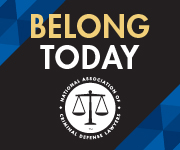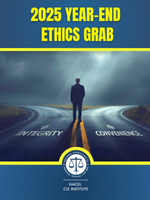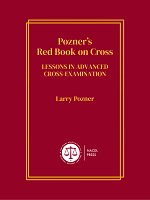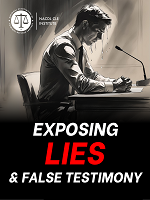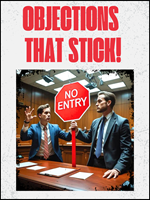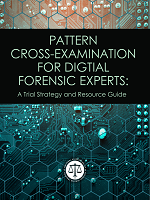Jump to Second Circuit Information
State Information
In February 2020, the National Association of Criminal Defense Lawyers asked its membership about how it communicated with clients in custody. The survey focused particularly on lawyers’ ability to communicate with their detained and incarcerated clients. The below data is focused on findings regarding confidentiality, a key requirement of attorney-client communication.
Facility |
Phone |
Video |
|
In-PersonWant to submit a correction or additional information about facilities you visit? Tell us in this form. |
|---|---|---|---|---|
| BCC |
|
|
|
|
Federal Information
Like the First Circuit, the Second Circuit adopted the Weatherford standard for Sixth Amendment claims in criminal actions.{1} 1 See e.g., United States v. Sanin, 113 F.3d 1230 (2d Cir. 1997) (“In order to make out a Sixth Amendment violation of the type alleged . . . a defendant must show that he has suffered prejudice as a result of communications that allegedly impinged upon the attorney-client privilege.” (citing Weatherford v. Bursey, 429 U.S. 545, 558 (1977).). Another type of Sixth Amendment case that is frequently litigated in the Second Circuit, results when detainees bring a civil action challenging a particular prison policy or practice that violates their constitutional rights.{2} 2 See e.g., Benjamin v. Fraser, 264 F.3d 175, 187 (2d Cir. 2001); Smith v. Coughlin, 748 F.2d 783 (2d Cir. 1984); Grubbs v. Safir, 2018 WL 1225262, at *3 (S.D.N.Y. 2018). In these civil cases, to determine whether an intentional intrusion into the attorney-client privilege constitutes a Sixth Amendment violation, Second Circuit courts balance the intrusion against the jail or prison’s interest in safeguarding institutional security.{3} 3 See Grubbs v. Safir, 2018 WL 1225262, at *3 (S.D.N.Y. 2018) (explaining that even when an institutional restriction infringes a specific constitutional guarantee, the practice must be evaluated in the light of the central objective of prison administration, safeguarding institutional security.” (citing Bell v. Wolfish, 441 U.S. 520, 547 (1979); Grubbs v. Safir, 2018 WL 1225262, at *6. “Many courts have found that the mere monitoring of attorney-client interactions, whether visually or even aurally, alone, does not constitute a Sixth Amendment violation.” (citing Carr, 2009 WL 1514661, at *33 (D. Idaho 2009); Peyton, 276 F. Supp. at 277 (W.D. Va. 1967)). Courts must ultimately evaluate whether the challenged conduct or restriction “unjustifiably obstruct[s],” “unreasonably burden[s]” or “interfere[s]” with the detainee’s opportunity to consult with their attorney and to prepare their defense.{4} 4 Benjamin v. Fraser, 264 F.3d 175, 187 (2d Cir. 2001); Grubbs v. O’Neill, 744 Fed.Appx. 20 (2d Cir. 2018) (The Second Circuit, “employ[s] a balancing test to determine if the restriction ‘unreasonably burden[s]’ an individual in custody’s ‘opportunity to consult with his attorney and to prepare his defense.” One factor that courts must consider is the chilling effect that the government intrusion may have had on the defendant.{5} 5 Grubbs v. O’Neill, 744 Fed.Appx. 20 (2d Cir. 2018)(“The district court was obligated to weigh any chilling effect of the surveillance cameras against the City’s security interests.”). Courts must also consider any reasonable measures [that] would safeguard the detainees' constitutional rights at minimal cost to the Department and without impairing its institutional concerns.{6} 6 Benjamin v. Fraser, 264 F.3d at 187; J.B. v. Onondaga Cty., 401 F. Supp. 3d 320, 336 (N.D.N.Y. 2019).
In Grubbs v. Safir, the defendants challenged Richmond County Correctional Facility’s use of video surveillance cameras in attorney-client meeting booths.{7} 7 Grubbs v. Safir, 2018 WL 1225262, at *1 (S.D.N.Y. 2018). The cameras use “masking technology” which includes features designed to protect the privacy of attorney-client communications: the cameras do not capture audio, and only capture the detainee’s side of the booth.{8} 8 Id. at *5. Further, the technology “block[s] the portion of the image of the booth where the detainee sits to speak with his/her attorney.”{9} 9 Id. The District Court for the Southern District of New York first found that the detention facility’s use of cameras in attorney-client booths served the legitimate purpose of maintaining safety.{10} 10 Id. at *6. “[N]otably, Plaintiffs point out that since the RCCC opened in September 2015, there have been no documented instances of violence, use of force, or recovery or use of contraband in the attorney-client meeting rooms. While this may be true, these types of security issues may arise in the future, and cameras may help minimize such occurrences.” Id. (internal citation omitted). Second, the court found that the City’s proposed use of video recordings, without sound, plus masking technology does not significantly interfere with or otherwise prejudice detainees' access to counsel.{11} 11 Id. at 7. Finally, the court rejected plaintiff’s arguments that the city could not be trusted to employ the masking technology properly, as well as the risk that a detainee’s gestures may still be recorded, stating that “the mere risk that communicative gestures outside of the “masked” area may be recorded does not rise to the level of a constitutional violation and that plaintiffs had not alleged any prejudice.{12} 12 Id.
On appeal, the Second Circuit remanded the case, explaining that the district court erred in not considering the chilling effect that the cameras’ presence in the attorney-client booths had on detainees’ willingness to communicate candidly with their attorneys.{13} 13 Grubbs v. O'Neill, 744 F. App'x 20, 23 (2d Cir. 2018). “[T]he district court erroneously concluded that a detainee’s ‘subjective impression or belief’ that her conversation was being recorded and monitored did not constitute a cognizable burden on the Sixth Amendment.” The City argued that the notices they displayed in the attorney–client booths that the cameras do not capture sound, record only visual information were sufficient to overcome the possibility of prejudice. However, the Second Circuit found that that “solution d[id] not necessarily cure chilling concerns. . . The district court was obligated to weigh any chilling effect of the surveillance cameras against the City’s security interests to determine whether the video surveillance with masking technology violates the Sixth Amendment.”
In Benjamin v. Fraser, the Second Circuit denied termination of a New York City consent decree that addressed systematic “unconstitutional burdens” to inmate access to counsel and courts that constituted Sixth Amendment violations.{14} 14 Smith v. Coughlin, 748 F.2d 783, 789 (2d Cir.1984) (ban on visits by paralegal personnel to convicted inmate violated the Sixth Amendment; although inmate could not prove compensable injury, he was entitled to nominal damages); see also Schoemehl, 878 F.2d at 1052 (restrictions on telephone access to attorneys by pretrial detainees were “inadequately justified”); Cobb, 643 F.2d at 959–60 (upholding injunctive relief against pretrial transfer of detainees to distant facilities since such transfers caused “substantial interference with the right to effective assistance of counsel”). The facts leading to this consent decree consisted of New York City defense attorneys routinely facing unpredictable, substantial delays in meeting with clients detained at Department facilities.{15} 15 Benjamin v. Fraser, 264 F.3d 175, 179 (2d Cir. 2001). Attorneys were forced to wait between 45 minutes and two hours, sometimes substantially longer, after arriving at a facility to see a client.{16} 16 Id. at 180. Courthouse visits were not available on less than a day's notice, nor in the evenings or on weekends. Attorneys had to call every hour to see if their client had been produced. Inmates were sometimes returned to jail before the attorney arrived or were not produced at all. Some of the counsel rooms at the courthouses were not private.{17} 17 Id.
In the case of J.B. v. Onondaga Cty., plaintiffs (adolescent and juvenile defendants in the custody of New York State) moved for a preliminary injunction, alleging that each time they attempted to consult with their attorneys in private, an Onondaga County Sheriff's deputy or Syracuse police officer remained in the interview room and refused to leave.{18} 18 J.B. v. Onondaga Cty., 401 F. Supp. 3d 320, 325 (N.D.N.Y. 2019) The evidence presented revealed that Onondaga County routinely sent other teenagers into criminal hearings, including arraignments and bail hearings, “without the chance to have a candid conversation with their lawyers and, therefore, without the meaningful assistance of counsel.”{19} 19 Id. The County’s excuse for these practices was “its erroneous reading” of state regulations, which delineated a practice of “constant supervision.”{20} 20 Id. at 341. The Attorney General filed a brief supporting Plaintiff's request for a preliminary injunction. In it, she advises: (1) that the Commission's “regulations do not require constant supervision of adolescent offenders during attorney-client meetings at the Youth Part”; (2) that “the County's practice of posting law enforcement officers in the youth part's interview room during attorney-client meetings violates their Sixth Amendment right to counsel.” Id. at 329-30. The motion for preliminary injunction was granted, requiring that a room be made available for class members to meet privately with their attorneys in the Syracuse Criminal Courthouse in the Youth Part. Further, the court enjoined law enforcement “from being present in the room when class members are discussing their cases with their attorneys before or after court appearances.”{21} 21 Id. at 346.

